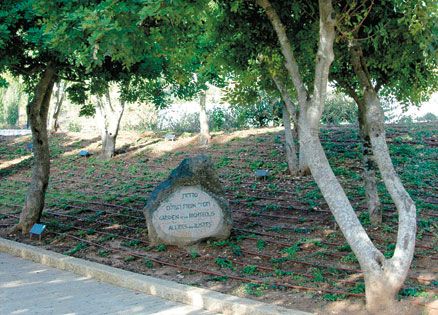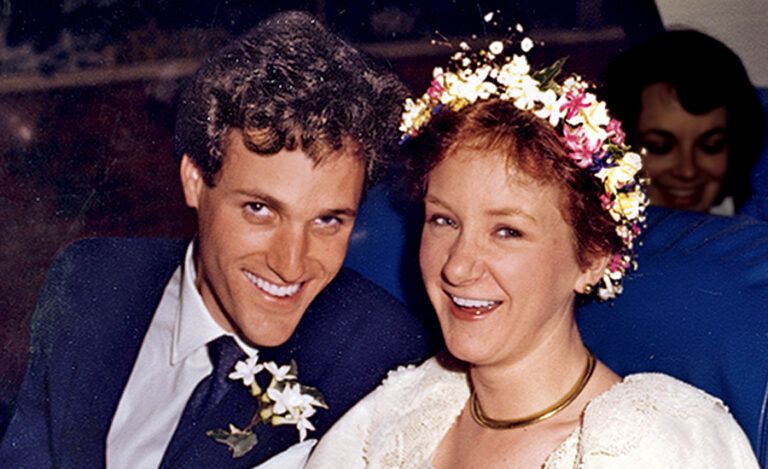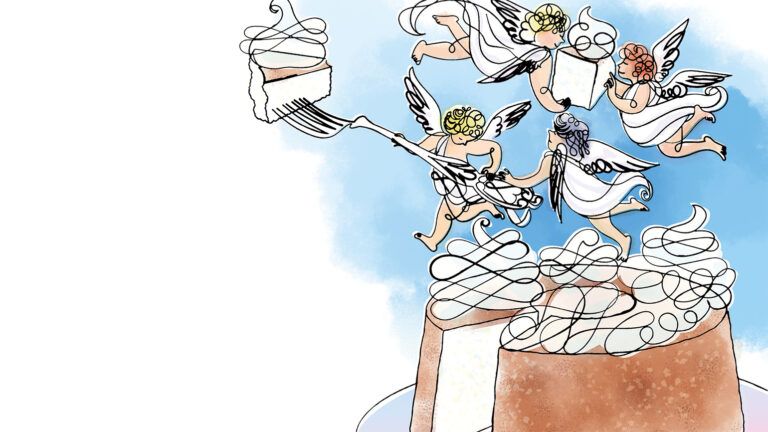I was curled up like a ball under a tree. I looked up and saw a woman standing over me. A beautiful woman with blue eyes. She asked me where my father was, who I was, where my parents were. I told her that my father had gone to look for food and hadn’t come back. She picked me up and carried me. She put me under her coat and walked with me…. She was like something from heaven. Like an angel. –Masha Wolfstal, Kamien Koszyrski, Volhynia
Masha Wolfstal was just a little girl during the Holocaust, but as a Jew, she was targeted for death by the Nazis. Because of the kind stranger she met under a tree that day, Masha lived to tell the story.
On the lush green slopes of Har Hazikaron, the Mount of Remembrance in Jerusalem, sits Yad Vashem, the Holocaust Memorial. The grounds are bursting with life. Hundreds of trees line the paths, turning the campus into a place of peace and beauty. Look closer at the trees and you will see the names on each one: Gitta Bauer of Germany. Leopold Sawicki of Poland. Henriette Pages of France.
The people honored here are called the Righteous of All Nations: people like Masha Wolfstal’s rescuer who risked their own lives to protect and hide their Jewish neighbors from Nazi soldiers and collaborators who hunted them.
Punishment for sheltering Jews ranged from deportation to con-centration camps to immediate execution, sometimes of one’s entire family. Yet the people honored here defied the danger to help those in need. Why?
Irena Steinfeldt, the Director of the Department of the Righteous, says she is often asked if there is some common denominator that made these people different from the millions who turned away from what was happening and didn’t help. “I can’t see anything the ‘Righteous’ have in common,” she says, “except that at one moment they decided that someone—often someone they didn’t know—was more important than anything else.”
There are over 22,000 Righteous honored at Yad Vashem. They come from 44 countries and all walks of life, from royalty to illiterate peasants. Some are Catholic, Protestant, Muslim, atheist. They were farmers, undertakers, zoo keepers and circus folk. Teachers, doctors and railway workers. None of them, it seems, set out to be heroes.
Gertruda Babilinska was a nanny for the Stolowicka family in Warsaw. Mr. Stolowicka was in Paris when the war broke out. He was unable to return to his family in Poland. Gertruda smuggled his wife, Lidia Stolowicka, and their three-year-old son out of the city.
When Lidia Stolowicka died in April 1941, she asked Gertruda to protect little Michael. One day she hoped he would go to Israel. “I remember how the Gestapo would come at night,” Michael says today. “They knocked on the doors with dogs and threatening voices. I’ll never forget the look in Gertruda’s eyes in those moments when she was frightened.” But she had made a promise.
She obtained a false baptismal certificate and claimed Michael as her nephew. After the war, Gertruda brought Michael to Israel and raised him as her son.
Anton Sukhinski was an outcast in his little village of Zborow in the Ukraine. Some called him the village idiot. But when his Jewish neighbors were targeted for death he hid several of them in a tiny dugout in his backyard, somehow finding food to keep them alive until they were liberated. “My husband asked him why he took me in,” one of the survivors said. “He said that God had told him to save Jews.”
Gertruda Babilinska was not a soldier. Anton Sukhinski did not fight in battles. The woman who found Masha Wolfstal under a tree was a complete stranger. But to the Jewish people fighting for survival, these were the hidden heroes of the war. They proved the good mankind was capable of, even in the most dire circumstances.
For almost 50 years the Righteous of the Nations program at Yad Vashem has sought to honor these ordinary heroes. “I don’t know any other program,” says Steinfeldt, “where victims of a terrible crime set out to search for good people amongst the perpetrators and bystanders.”
Honorees are given a medal inscribed with a saying from the Mishna, the oral law of Judaism: “Whosoever saves a single life saves an entire universe.” They also have a tree planted in their honor in the Garden of the Righteous on the campus of Yad Vashem.
The light from this garden filters through a skylight into the Holocaust History Museum, designed by architect Moshe Safdie. The walls are thick, reinforced concrete that seem more suited to a prison than a museum. The museum floor slopes downward to create the illusion of descending deep into a dark mountain, much as the world descended into the darkness of the Holocaust. The light from above, like the trees it nourishes, represents the hope that gave a persecuted people the strength to fight for their survival. Reminding them that angels—both in heaven and on earth—were at work in the world, even in the darkest times.






